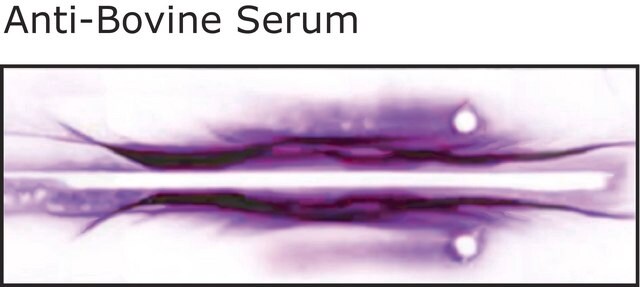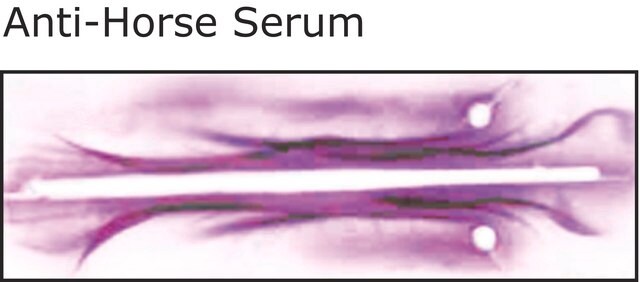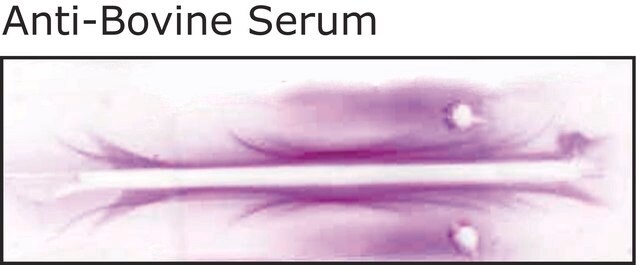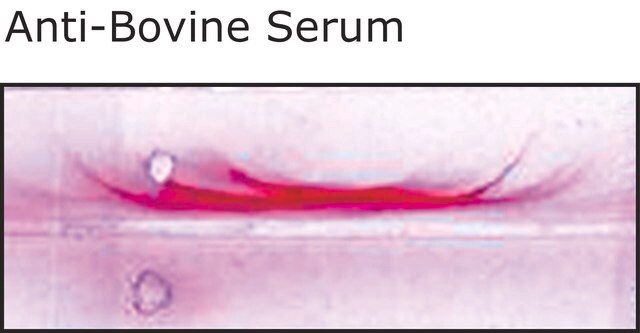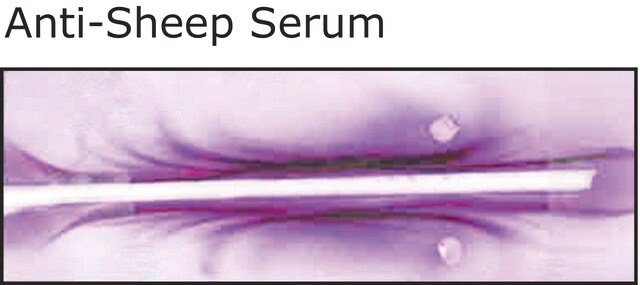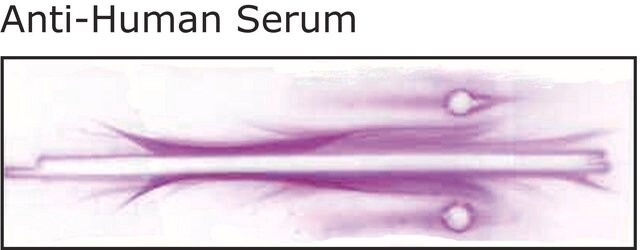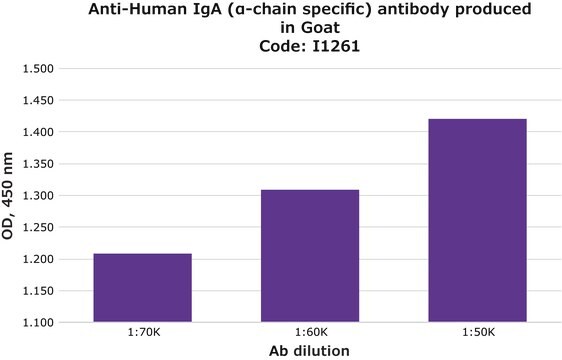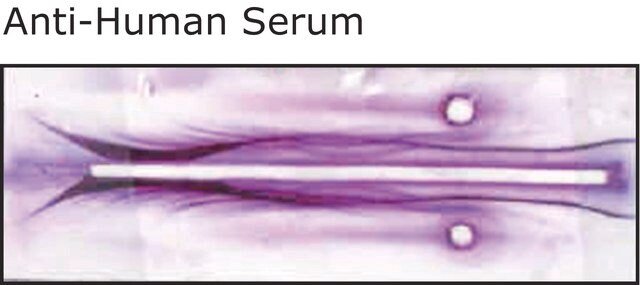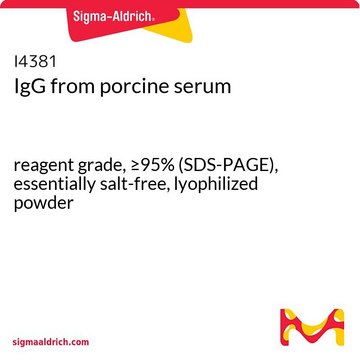P3164
Anti-Pig Serum antibody produced in rabbit
whole antiserum
Sinonimo/i:
Anti-Serum, pig
Autenticatiper visualizzare i prezzi riservati alla tua organizzazione & contrattuali
About This Item
Prodotti consigliati
Origine biologica
rabbit
Livello qualitativo
Coniugato
unconjugated
Forma dell’anticorpo
whole antiserum
Tipo di anticorpo
primary antibodies
Clone
polyclonal
contiene
15 mM sodium azide
Reattività contro le specie
pig
tecniche
immunoelectrophoresis: suitable
Condizioni di spedizione
dry ice
Temperatura di conservazione
−20°C
modifica post-traduzionali bersaglio
unmodified
Descrizione generale
Guinea pig serum is highly enriched with L-asparaginase activity. This L-asparaginase activity imparts inhibitory or anti-lymphoma effects to pig serum.
Specificità
Strong reactivity with normal pig serum has been determined.
Applicazioni
Anti-Pig Serum antibody produced in rabbit has been used in differential staining.
Anti-Pig Serum antibody produced in rabbit has been used in the dual differential staining of blastocysts to assess the number of inner cell mass (ICM) cells and trophectoderm (TE) cells.
Qualità
The antiserum has been treated to remove lipoproteins.
Stato fisico
Rabbit Anti-Pig Serum is provided as a liquid containing 0.1% sodium azide as preservative.
Stoccaggio e stabilità
For extended storage, the solution may be frozen in working aliquots. Repeated freezing and thawing is not recommended. Storage in "frost-free" freezers is not recommended. If slight turbidity occurs upon prolonged storage, clarify the solution by centrifugation before use.
Esclusione di responsabilità
Unless otherwise stated in our catalog or other company documentation accompanying the product(s), our products are intended for research use only and are not to be used for any other purpose, which includes but is not limited to, unauthorized commercial uses, in vitro diagnostic uses, ex vivo or in vivo therapeutic uses or any type of consumption or application to humans or animals.
Non trovi il prodotto giusto?
Prova il nostro Motore di ricerca dei prodotti.
Codice della classe di stoccaggio
13 - Non Combustible Solids
Classe di pericolosità dell'acqua (WGK)
WGK 1
Punto d’infiammabilità (°F)
Not applicable
Punto d’infiammabilità (°C)
Not applicable
Dispositivi di protezione individuale
Eyeshields, Gloves, multi-purpose combination respirator cartridge (US)
Scegli una delle versioni più recenti:
Possiedi già questo prodotto?
I documenti relativi ai prodotti acquistati recentemente sono disponibili nell’Archivio dei documenti.
I clienti hanno visto anche
Koji Yoshioka et al.
Biology of reproduction, 66(1), 112-119 (2001-12-26)
We evaluated the in vitro development of porcine zygotes that were cultured in a novel culture medium, porcine zygote medium (PZM), under different conditions and compared to in vivo development. The viability of these zygotes to full term after culture
Z Macháty et al.
Biology of reproduction, 59(2), 451-455 (1998-08-01)
In vitro development of early porcine embryos under different culture conditions was evaluated and compared to in vivo development. First, one- and two-cell embryos were collected and cultured individually in 20- microl drops under 5% CO2 in air for 4
Evidence that the L-Asparaginase Activity of Guinea Pig Serum is responsible for its Antilymphoma Effects
Broome JD
Nature, 191, 1114-1115 (1961)
Z Macháty et al.
Biology of reproduction, 57(5), 1123-1127 (1997-11-22)
Thimerosal (200 microM) triggered Ca2+ oscillations in 56 of 56 mature porcine oocytes. The Ca2+ oscillations were blocked by the sulfhydryl-reducing agent dithiothreitol (DTT), thus supporting the hypothesis that thimerosal acts by oxidizing critical sulfhydryl groups on intracellular Ca2+-release proteins.
Tao Lin et al.
Reproductive toxicology (Elmsford, N.Y.), 75, 96-109 (2017-12-17)
In this study, we used a pig model to investigate the effects of α-solanine (a natural toxin found mainly in potato sprouts) on oocyte maturation, quality and subsequent embryonic development. We found that α-solanine (10 μM) disturbed meiotic resumption and increased
Il team dei nostri ricercatori vanta grande esperienza in tutte le aree della ricerca quali Life Science, scienza dei materiali, sintesi chimica, cromatografia, discipline analitiche, ecc..
Contatta l'Assistenza Tecnica.